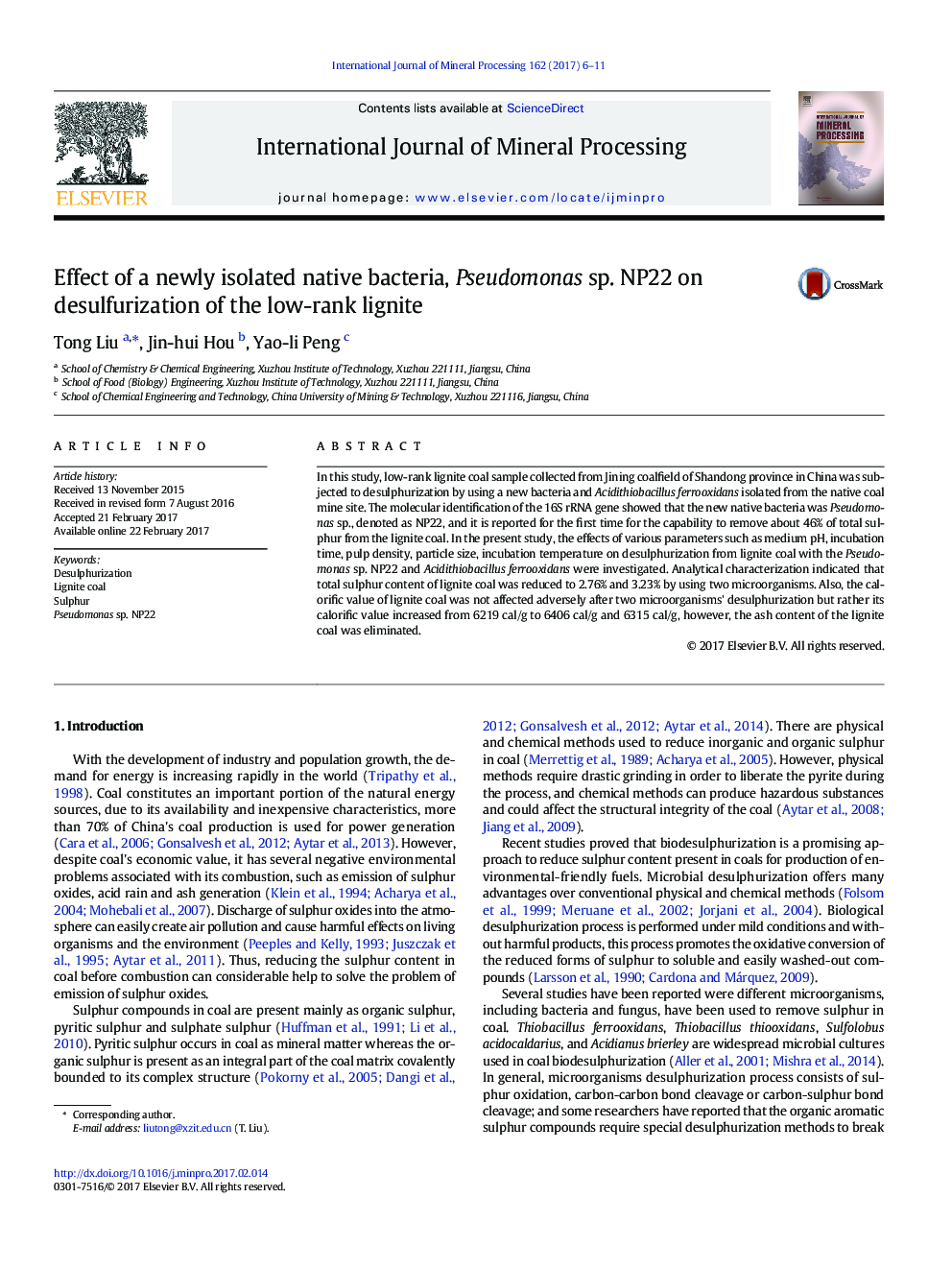| Article ID | Journal | Published Year | Pages | File Type |
|---|---|---|---|---|
| 4769161 | International Journal of Mineral Processing | 2017 | 6 Pages |
Abstract
In this study, low-rank lignite coal sample collected from Jining coalfield of Shandong province in China was subjected to desulphurization by using a new bacteria and Acidithiobacillus ferrooxidans isolated from the native coal mine site. The molecular identification of the 16S rRNA gene showed that the new native bacteria was Pseudomonas sp., denoted as NP22, and it is reported for the first time for the capability to remove about 46% of total sulphur from the lignite coal. In the present study, the effects of various parameters such as medium pH, incubation time, pulp density, particle size, incubation temperature on desulphurization from lignite coal with the Pseudomonas sp. NP22 and Acidithiobacillus ferrooxidans were investigated. Analytical characterization indicated that total sulphur content of lignite coal was reduced to 2.76% and 3.23% by using two microorganisms. Also, the calorific value of lignite coal was not affected adversely after two microorganisms' desulphurization but rather its calorific value increased from 6219Â cal/g to 6406Â cal/g and 6315Â cal/g, however, the ash content of the lignite coal was eliminated.
Keywords
Related Topics
Physical Sciences and Engineering
Chemical Engineering
Chemical Engineering (General)
Authors
Tong Liu, Jin-hui Hou, Yao-li Peng,
